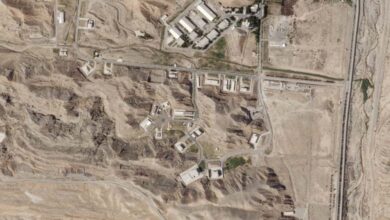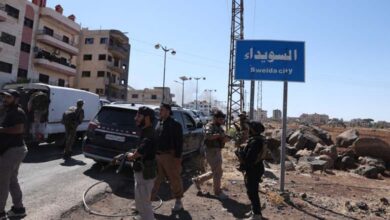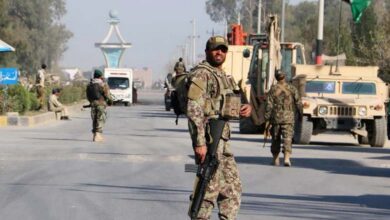Iran’s Missile Arsenal: What Hasn’t Yet Been Used in the War with Israel

The skies over the Middle East have turned into an open and ominous battlefield. As air raid sirens blare across Israeli cities, missiles streak through the skies over Iran.
While air defense systems scramble to intercept waves of Iranian missiles, questions arise about the size of Tehran’s ballistic missile arsenal and its ability to sustain this level of military pressure.
-
Hypersonic Missiles and Strikes on Nuclear Facilities: Day Six Between Iran and Israel
-
Iran and Israel: Cross-Strikes… Is There Still a Window for Nuclear Negotiations?
According to Newsweek, missiles are the cornerstone of Iran’s military strategy toward Israel. Tracking how many missiles have been launched and how many remain in stock is critical to assessing the future intensity of the conflict and the effectiveness of missile defense systems.
While Iran’s missile deterrent has helped restrain broader regional escalation, the true size and condition of its stockpiles remain unclear, raising concerns over its long-term offensive capabilities.
Adding to the complexity is the growing U.S. military support for Israel and warnings of a possible intervention, escalating tensions and threatening regional stability.
-
Following Approval from Iran and Israel: Ceasefire Negotiations in Lebanon Enter Final Stages
-
No Ceasefire in Gaza until De-escalation between Iran and Israel
Iranian Missiles Deployed
Iran has used a diverse set of ballistic missiles in its attacks, including older models like the Qadr and Emad, as well as the Kheibar Shekan, a medium-range solid-fuel missile with enhanced maneuverability.
More notably, Iran also deployed its hypersonic missile Fattah-1, which travels at speeds up to Mach 15 (fifteen times the speed of sound), making it extremely difficult to intercept.
-
Troubles and Crises: International Economy Affected by Iran and Israel Events
-
Israel strikes Hamas, Hezbollah, and Houthi “weapons supply line” in Iran… Who is Behnam Shahriari?
What Iran Hasn’t Used Yet
However, some of Iran’s more advanced missile systems—such as the long-range Khorramshahr (up to 2,000 km range and capable of carrying 1,500 kg warheads)—have not been clearly used in the current conflict, despite being showcased in test launches during 2023.
The high frequency of missile launches has raised concerns about Iran’s remaining inventory. Estimates from institutions like the Center for Strategic and International Studies suggest that, before the conflict, Iran had around 2,000 operational ballistic missiles.
-
One Week into War: Iran Expands Its Strikes on Israel with the Largest Rocket Barrage in 48 Hours
-
Missiles, Casualties, and Damage: Israel Reveals the Toll of Iranian Attacks
No recent or official data confirms this figure, and based on the volume of launches and interceptions, experts now estimate Iran’s remaining arsenal could be under 1,000 missiles. This remains uncertain, especially with reports that Iran has moved launch platforms and concealed storage sites to protect its capabilities.
Israel’s Air Defense Performance
Israel’s multi-layered air defense—comprising the Iron Dome, David’s Sling, and Arrow 2 and Arrow 3 systems—has intercepted a large proportion of incoming missiles.
-
Iran-Israel Escalation: Mass Launch of Evacuation and Withdrawal Phases
-
Anticipation and Preparations in Israel for a Double Attack from Iran and Yemen
Nonetheless, some missiles managed to bypass these advanced defenses, striking urban areas, military bases, and sensitive infrastructure, exposing the limitations of the system.
In response, Israel has carried out more than 250 airstrikes, dropping over 330 precision-guided bombs on Iranian targets, focusing mostly on missile production sites, storage depots, and launch platforms. However, according to local media, civilian infrastructure and residential areas were also affected.
-
Israel’s Strikes on Iranian Nuclear Facilities: Conflicting Assessments and Unclear Outcomes
-
Israel and Iran: Everything You Need to Know About The Fire Saturday
Israel maintains that its objective is to degrade Iran’s offensive capabilities. Still, the growing collateral damage on both sides has drawn concern from international observers.
Both Iran and Israel appear determined to continue exchanging blows for now. The United States has called for restraint while increasing its military presence in the region.
Meanwhile, regional and global calls for de-escalation are intensifying amid rising civilian casualties, but diplomatic efforts have so far failed to halt the rapidly escalating conflict.











